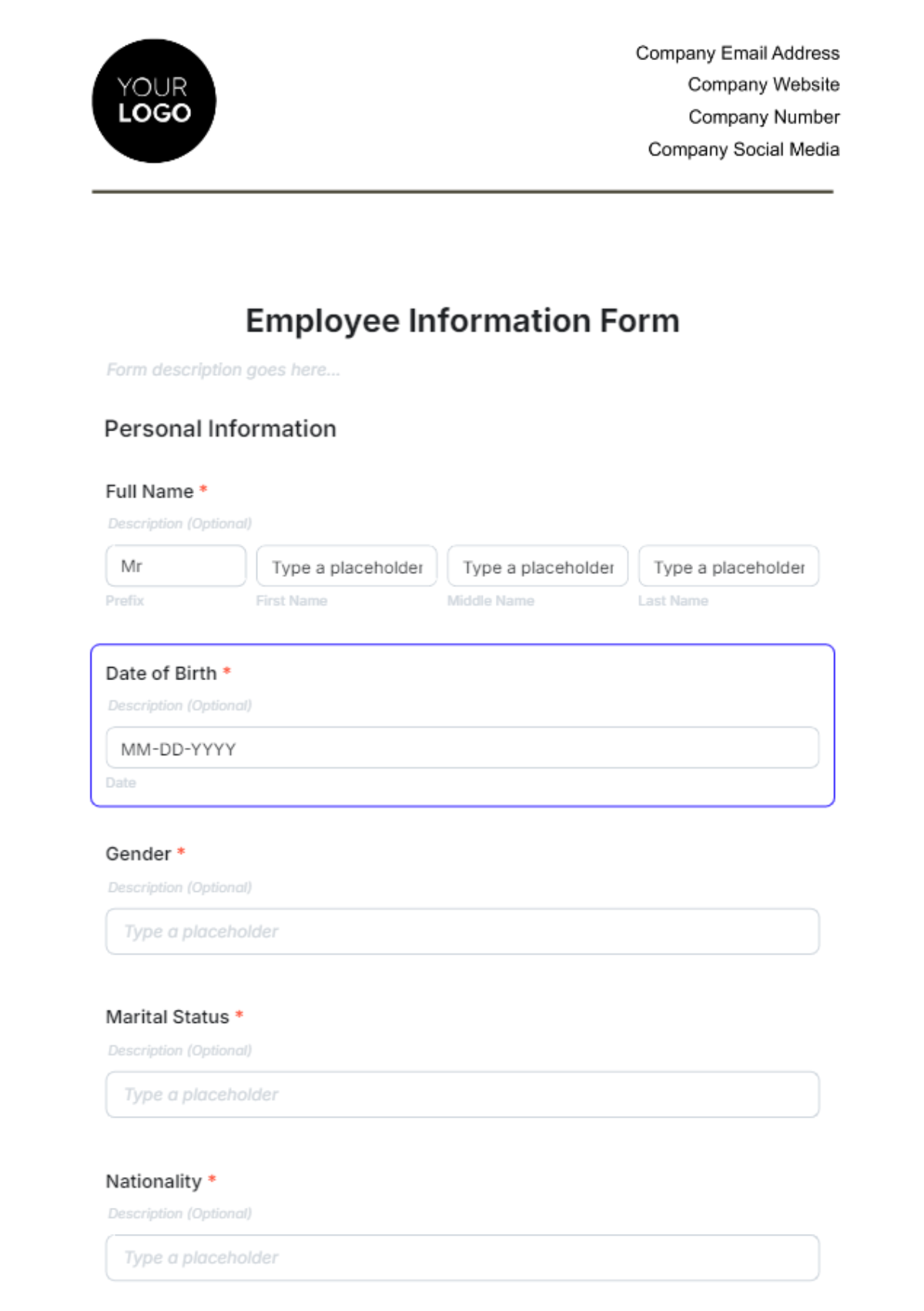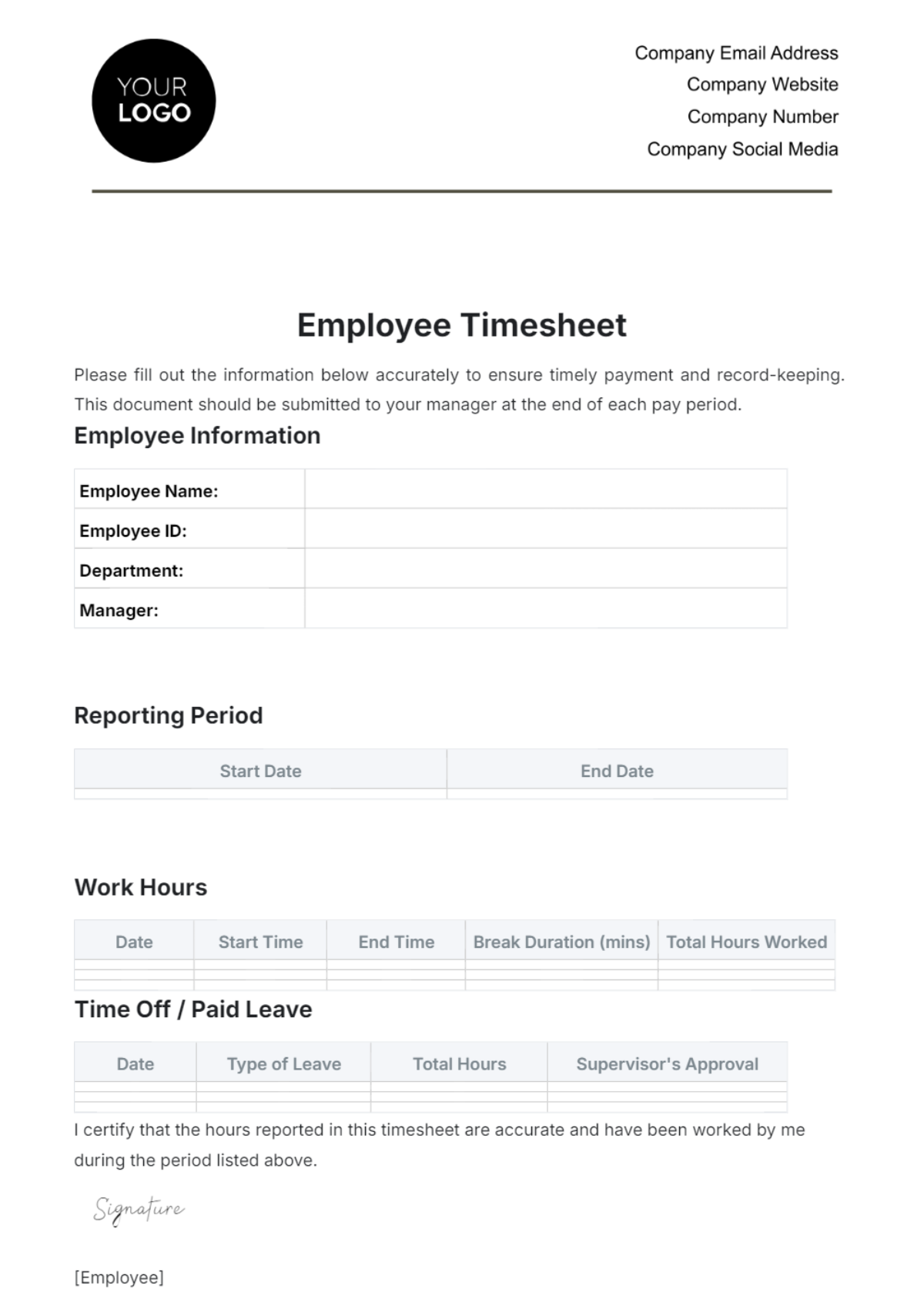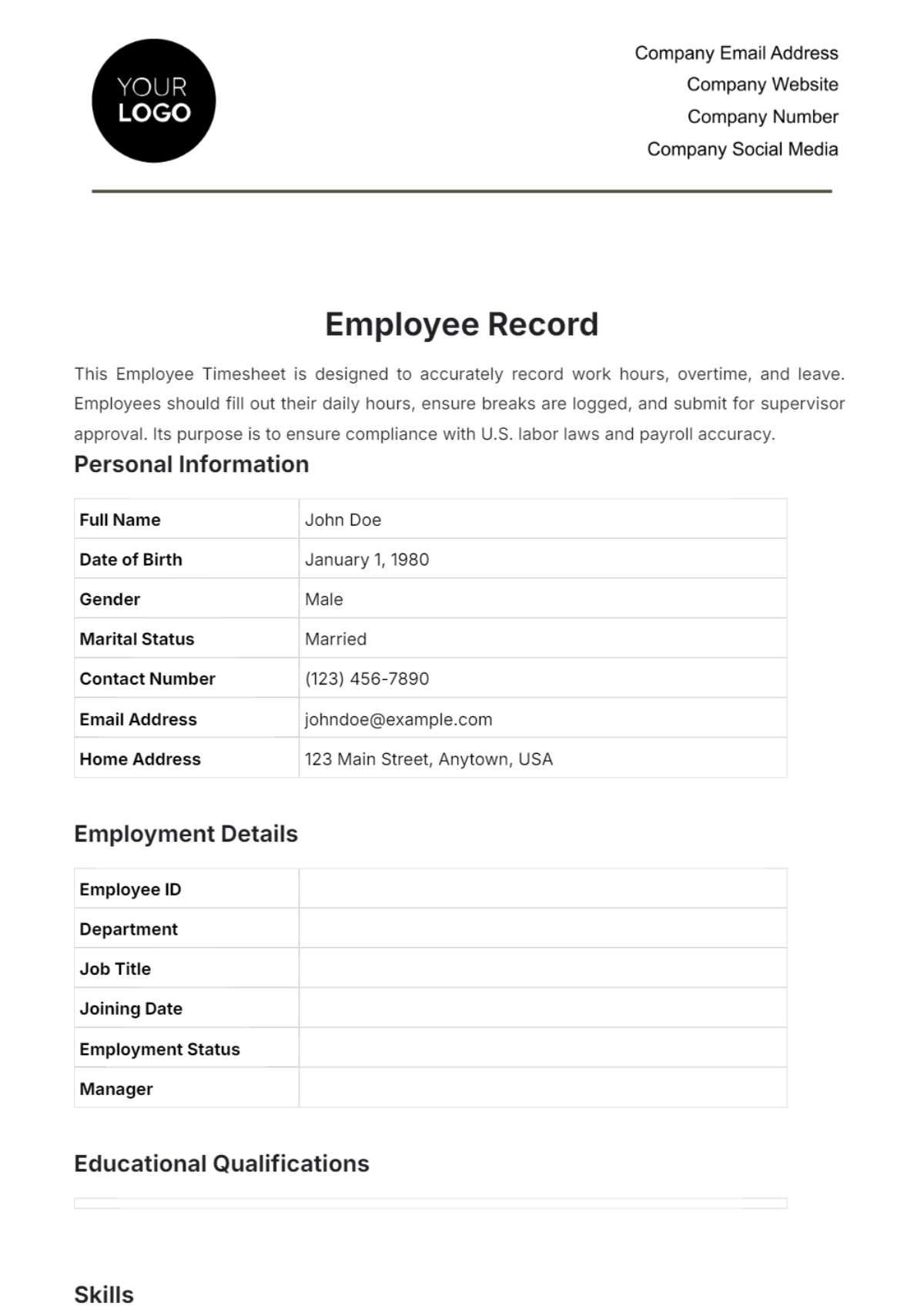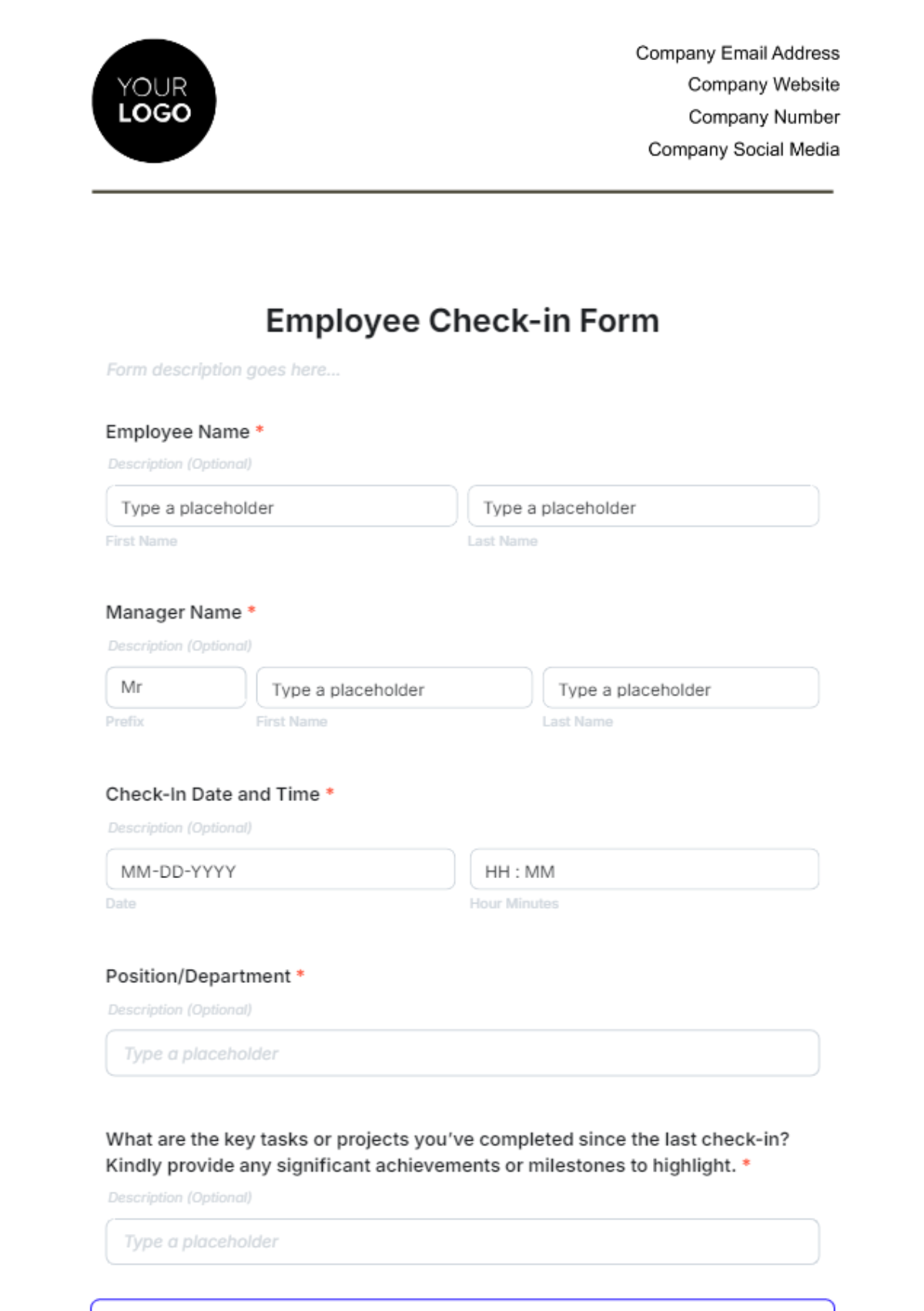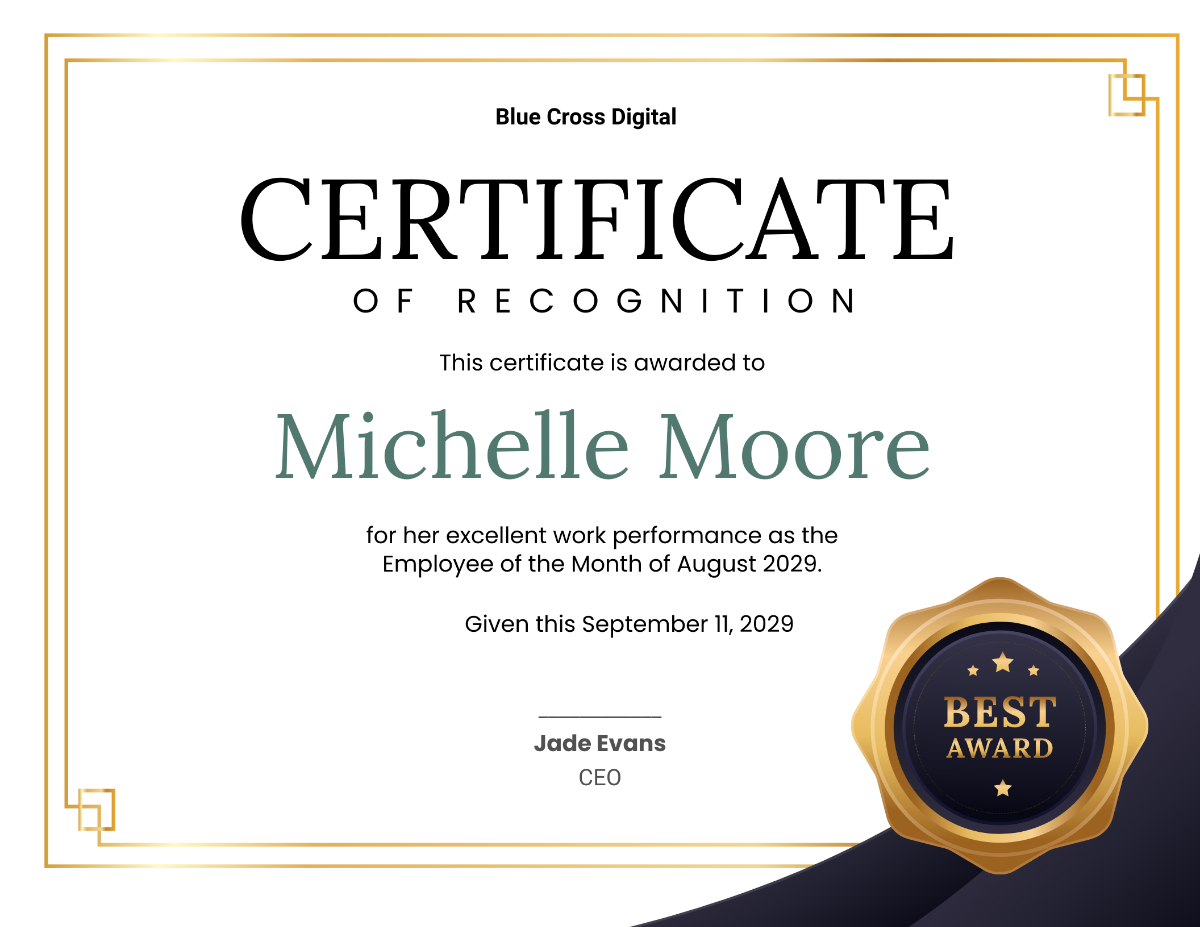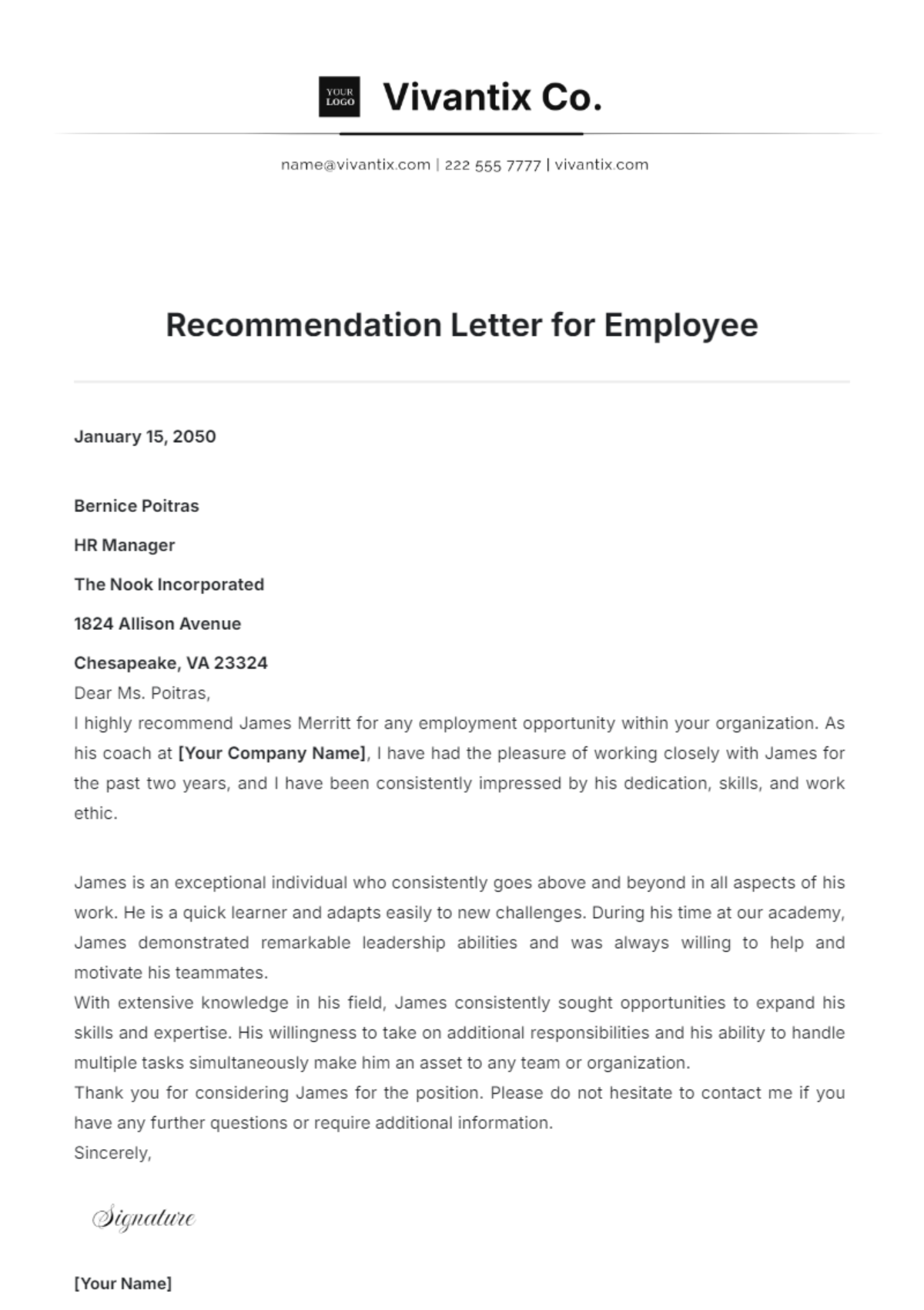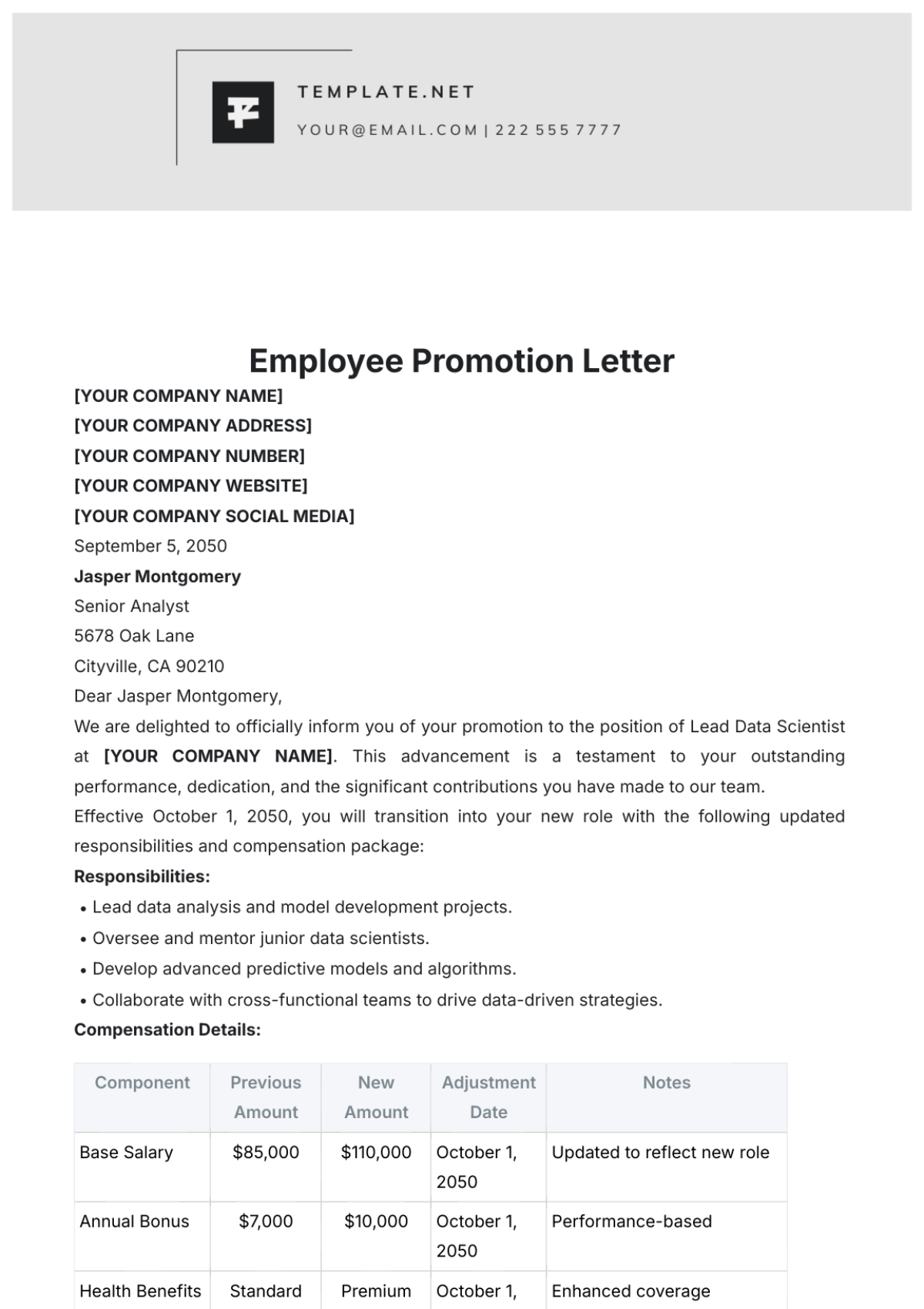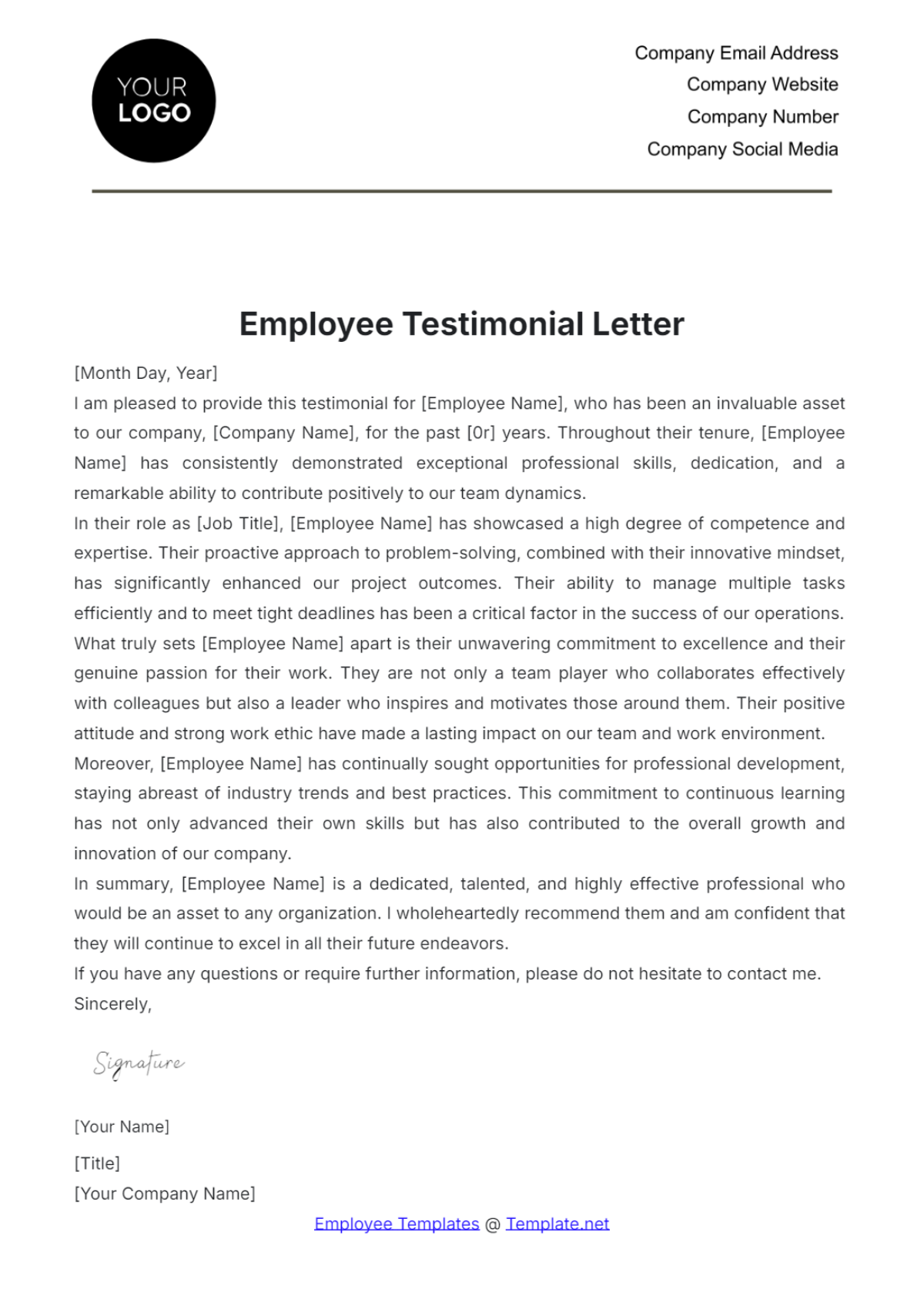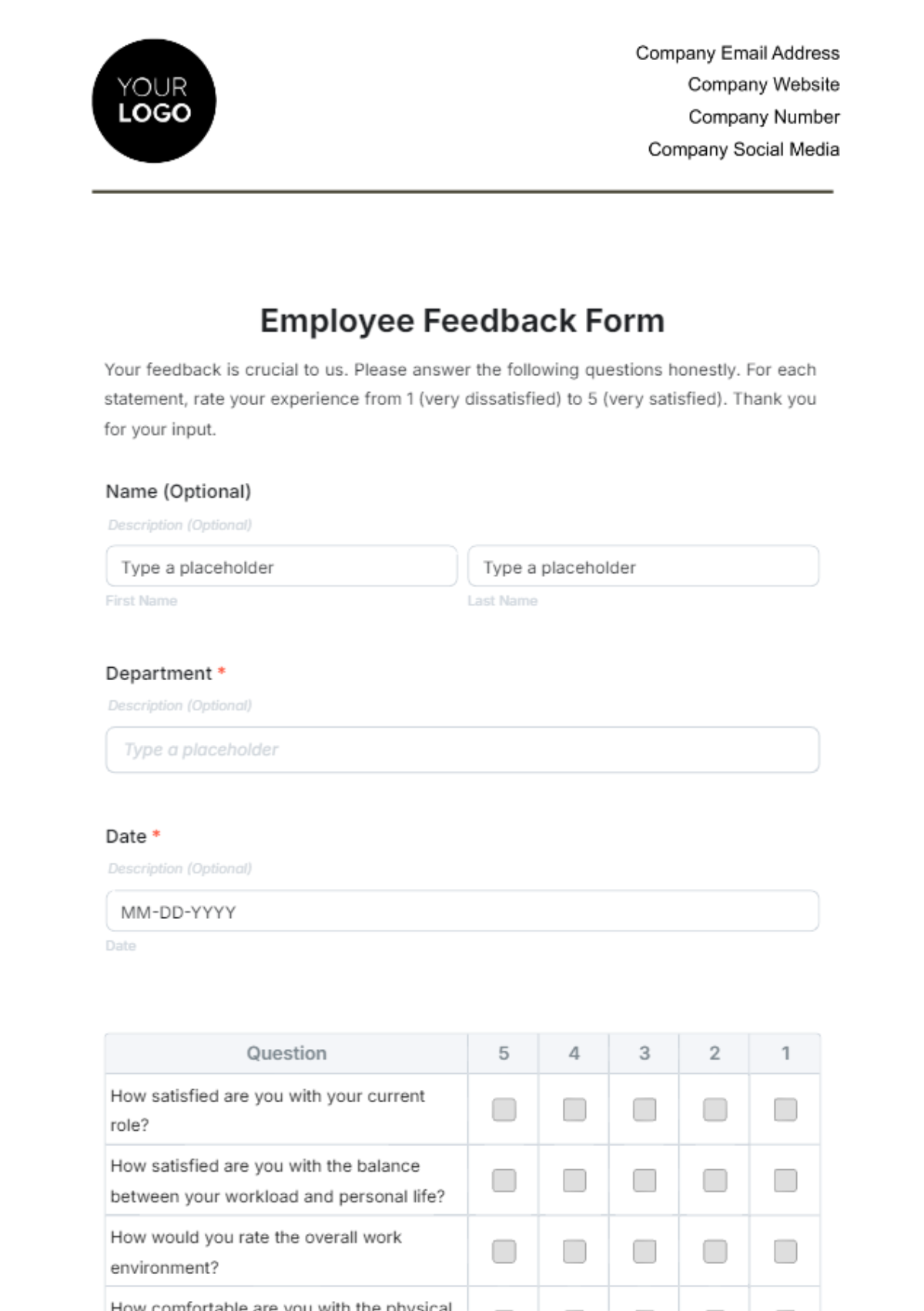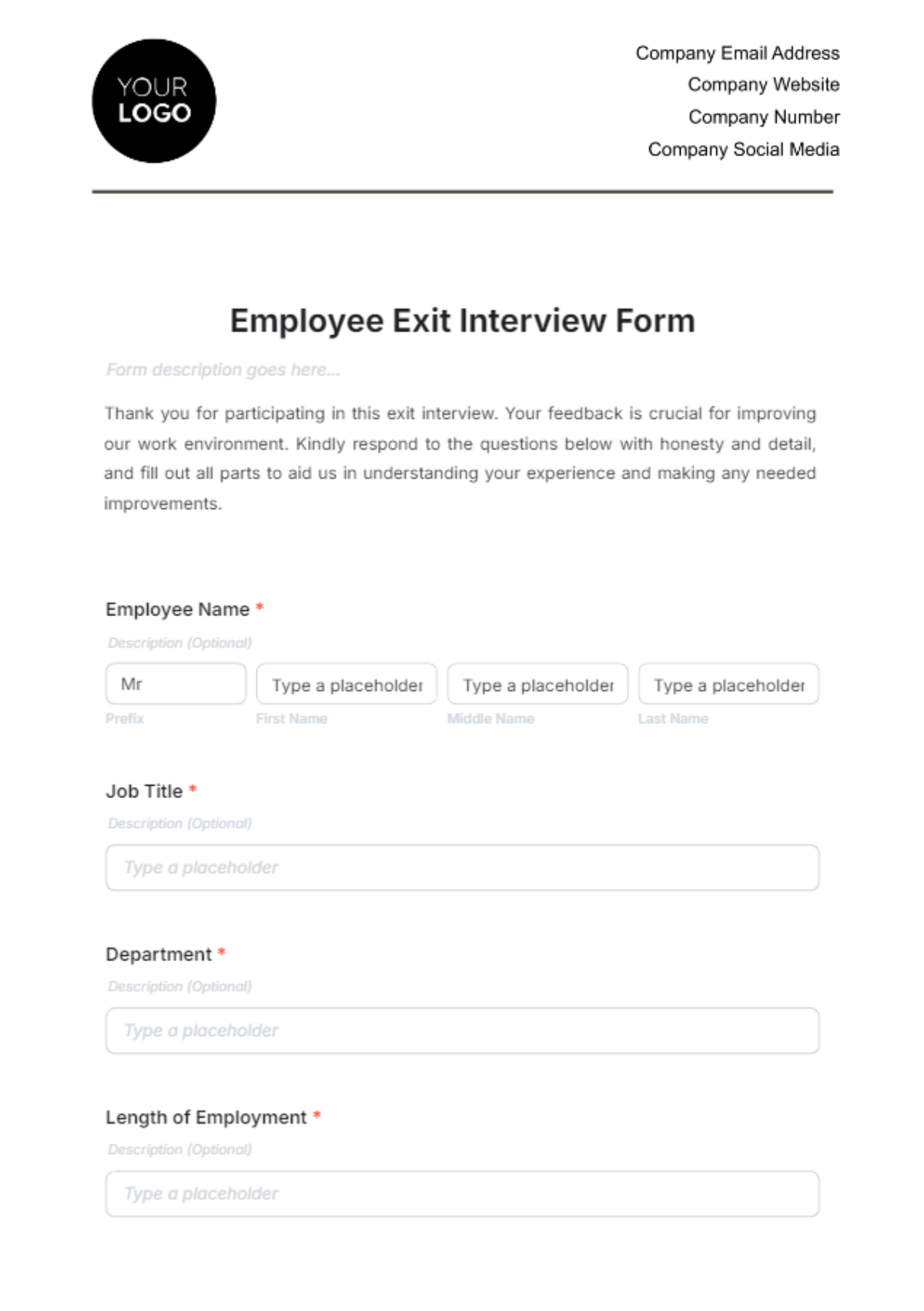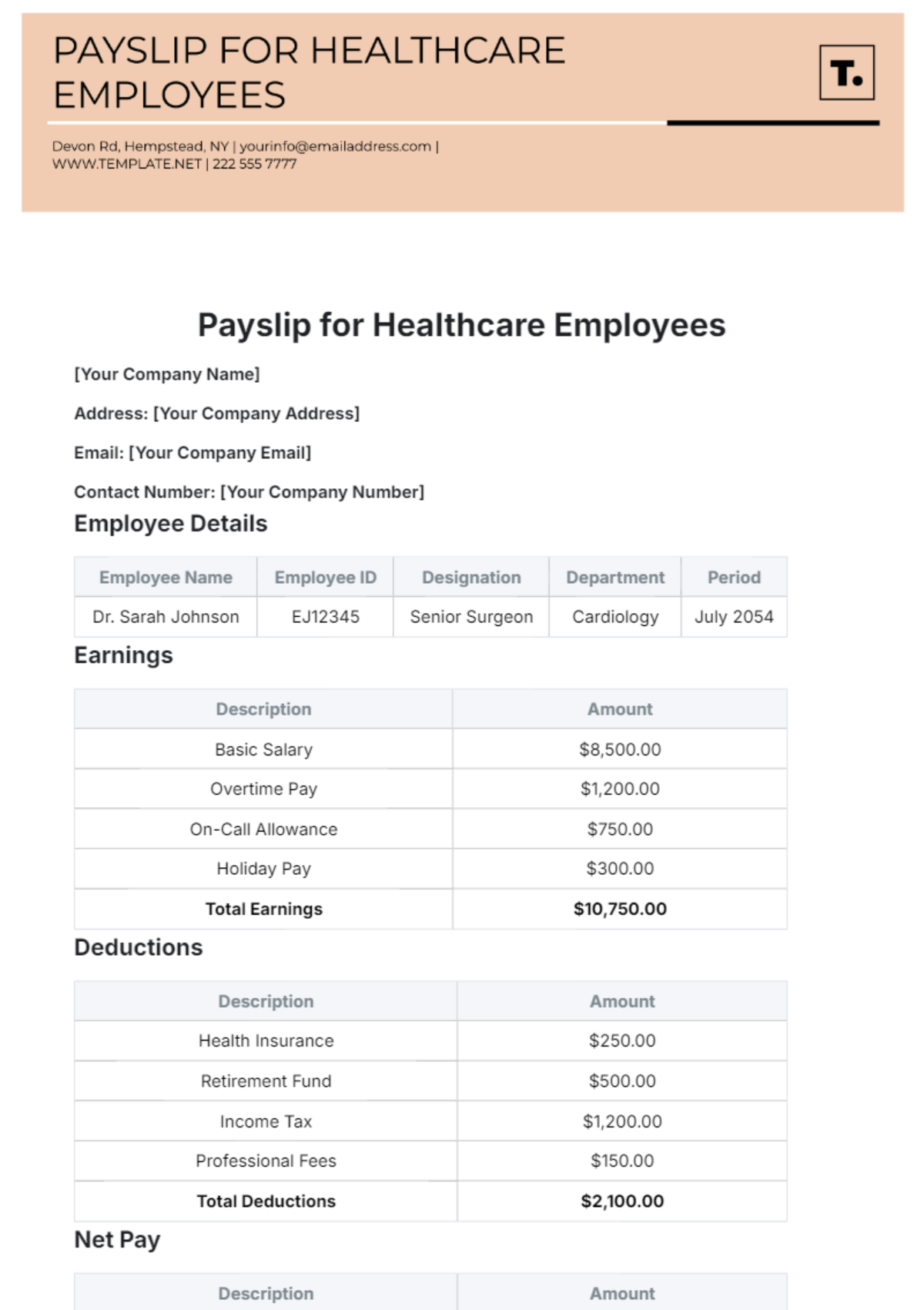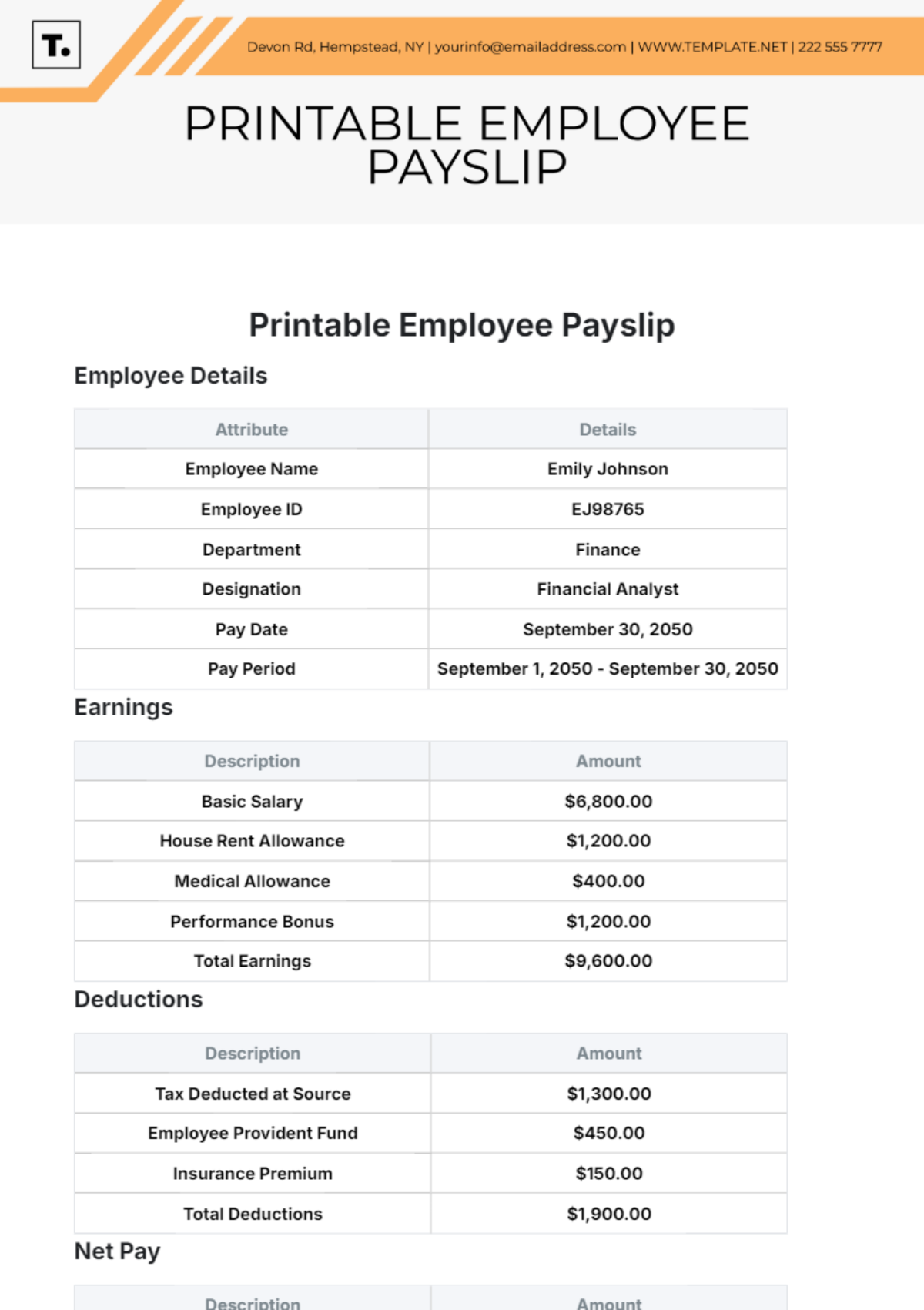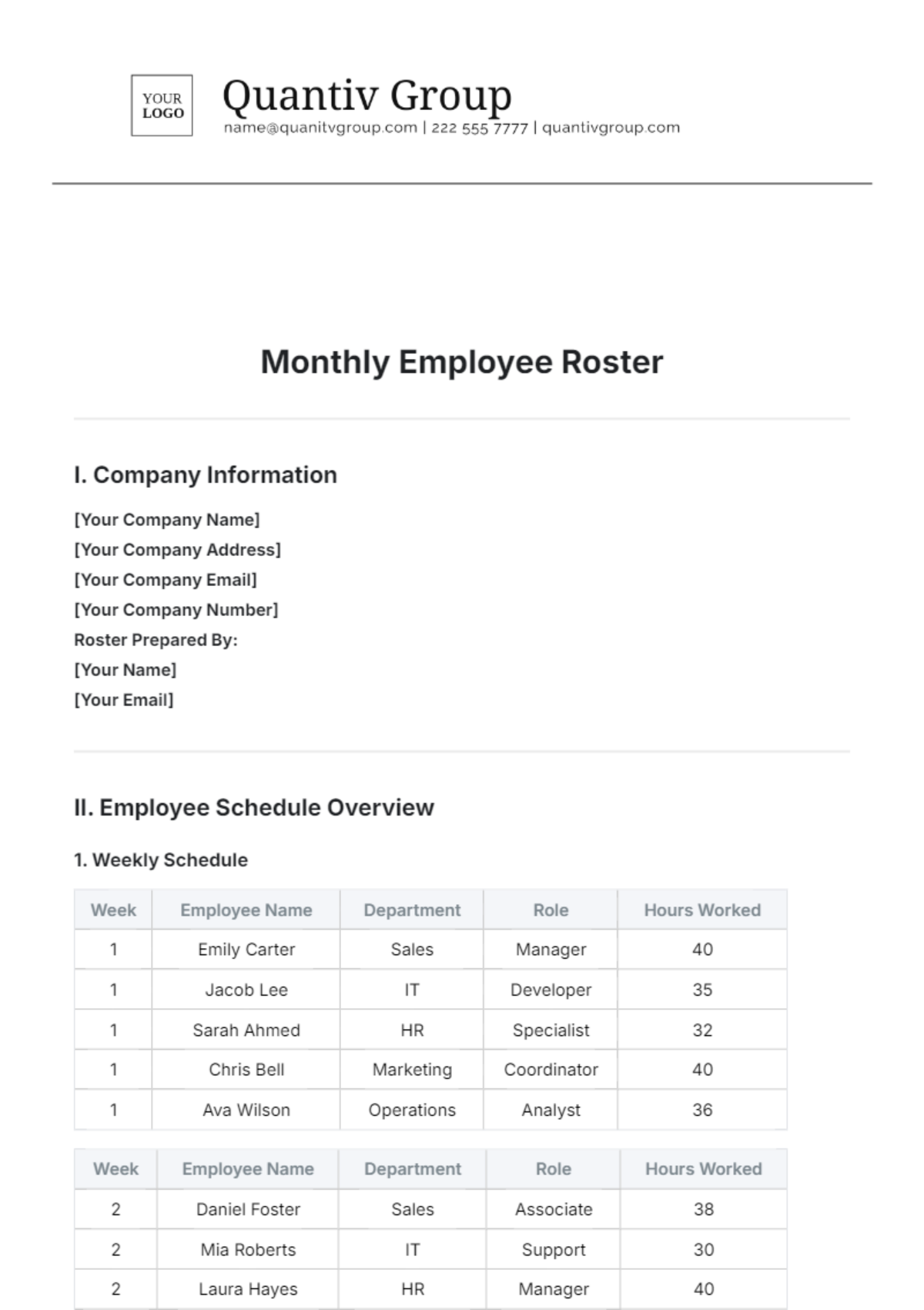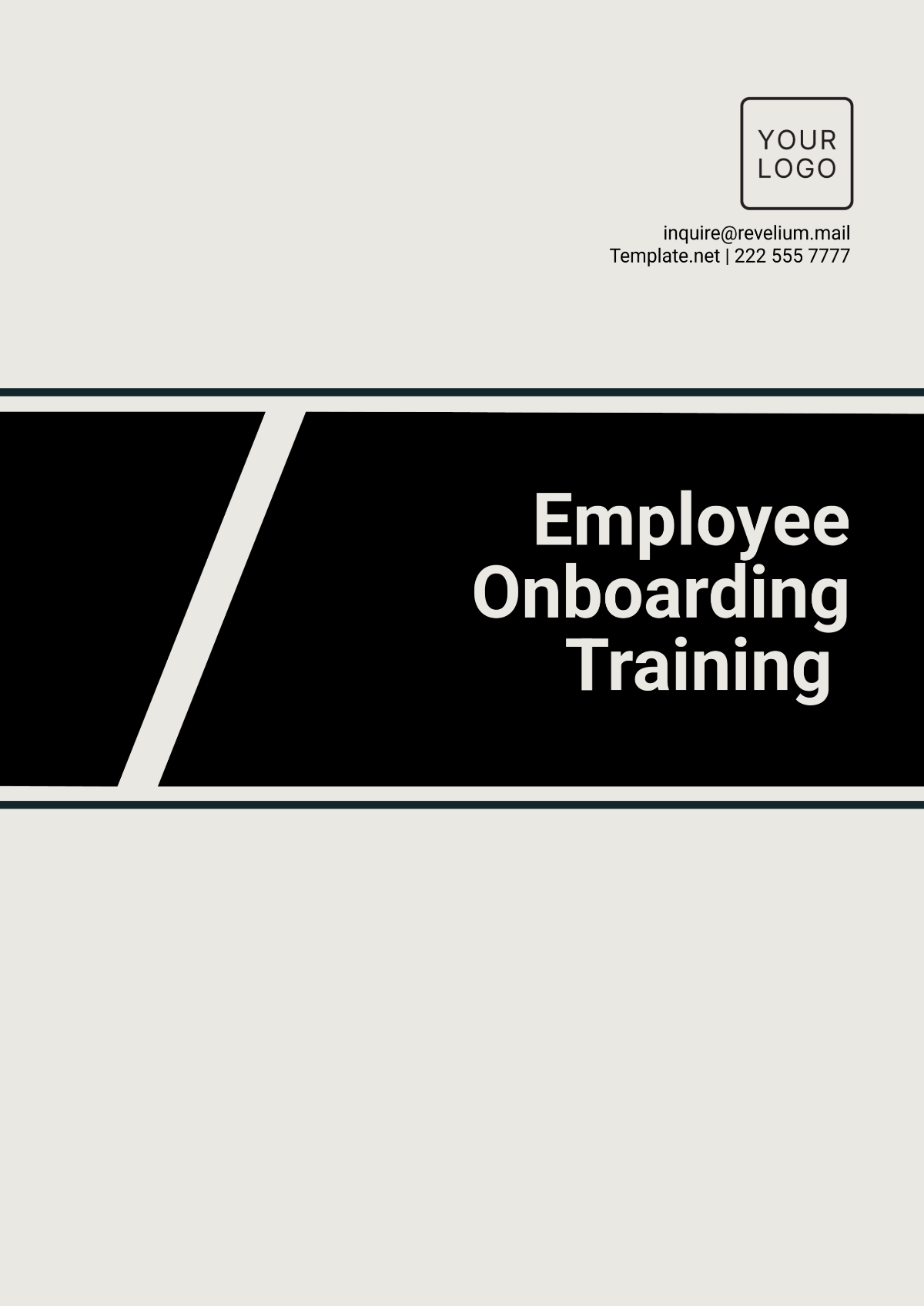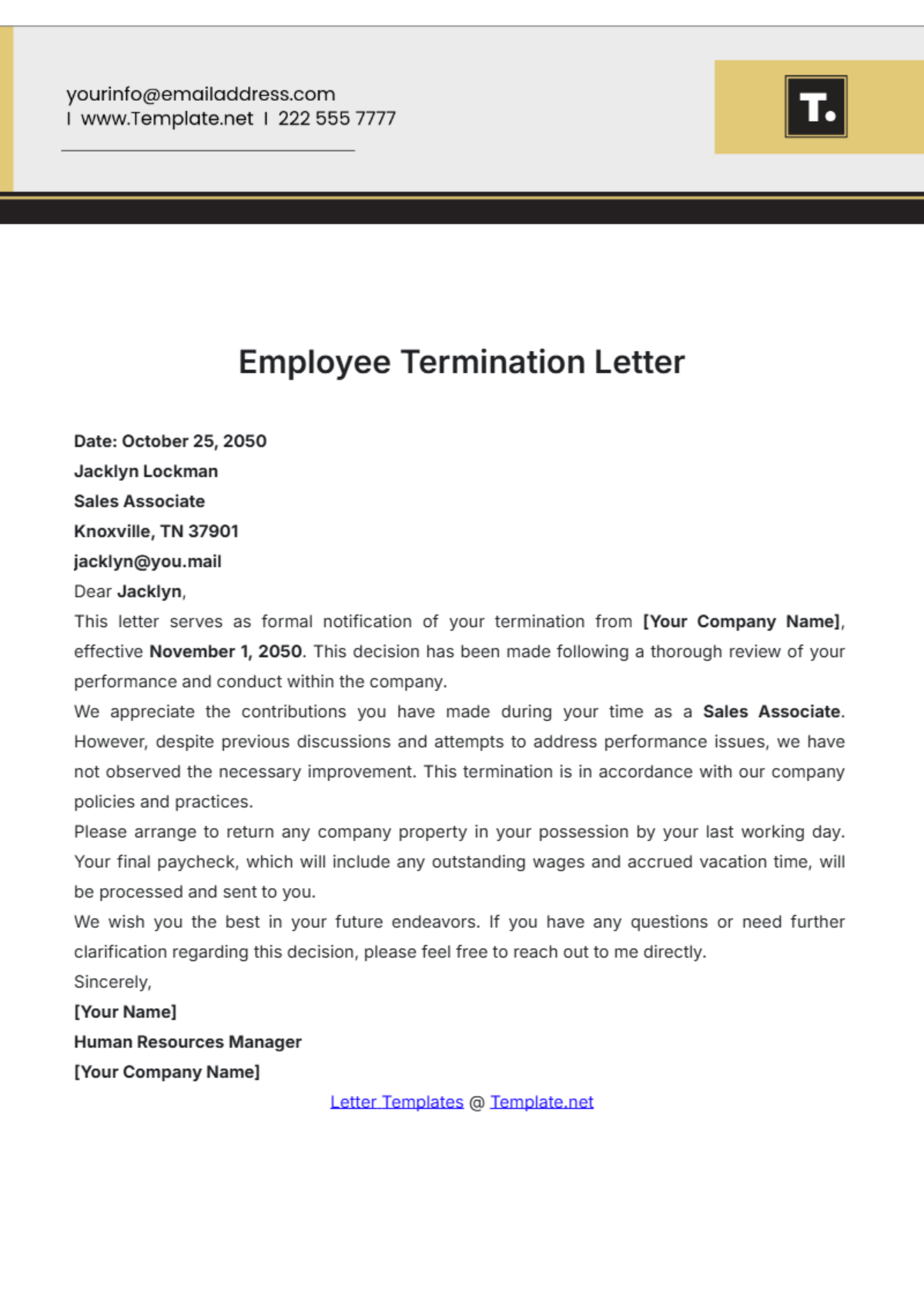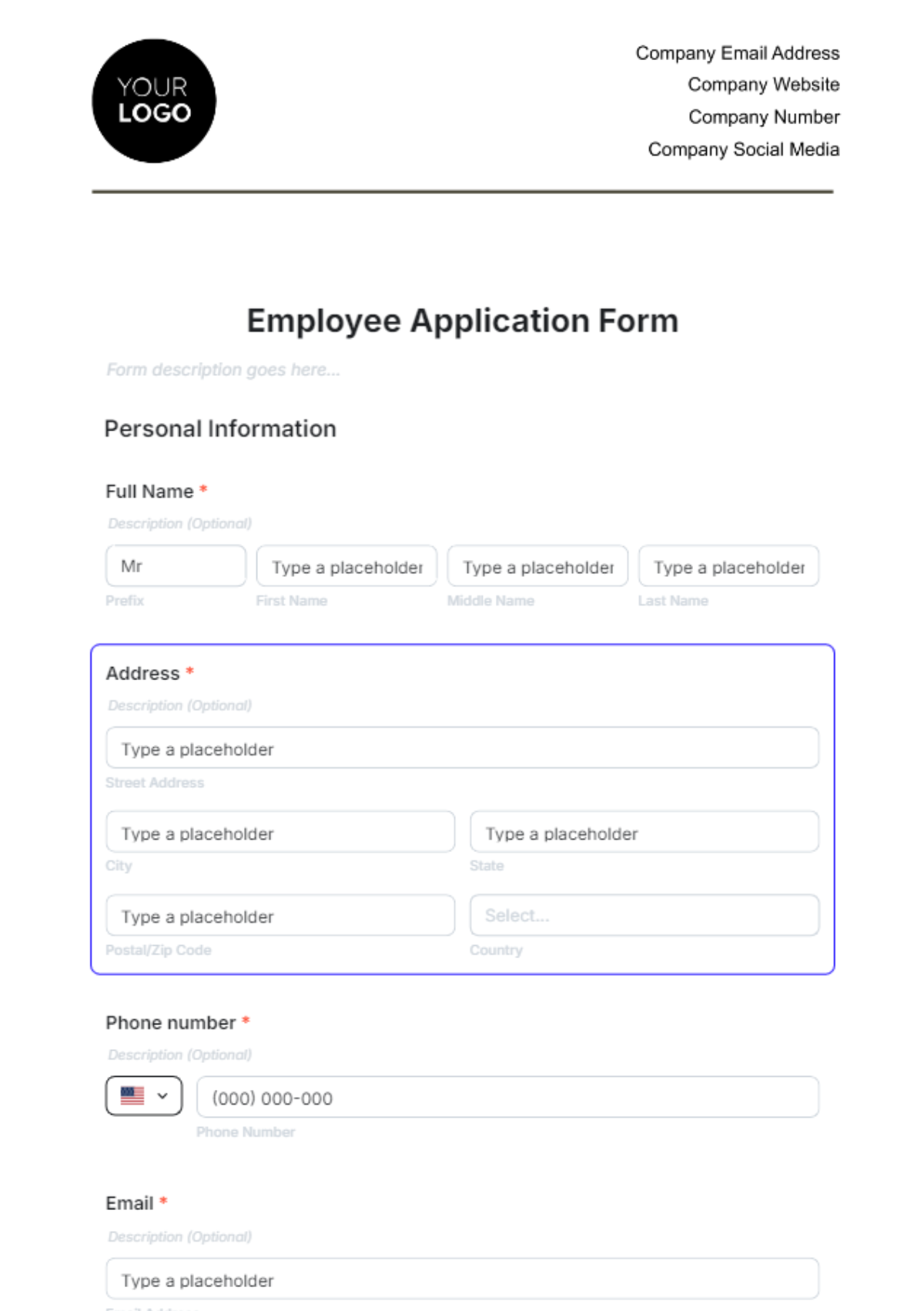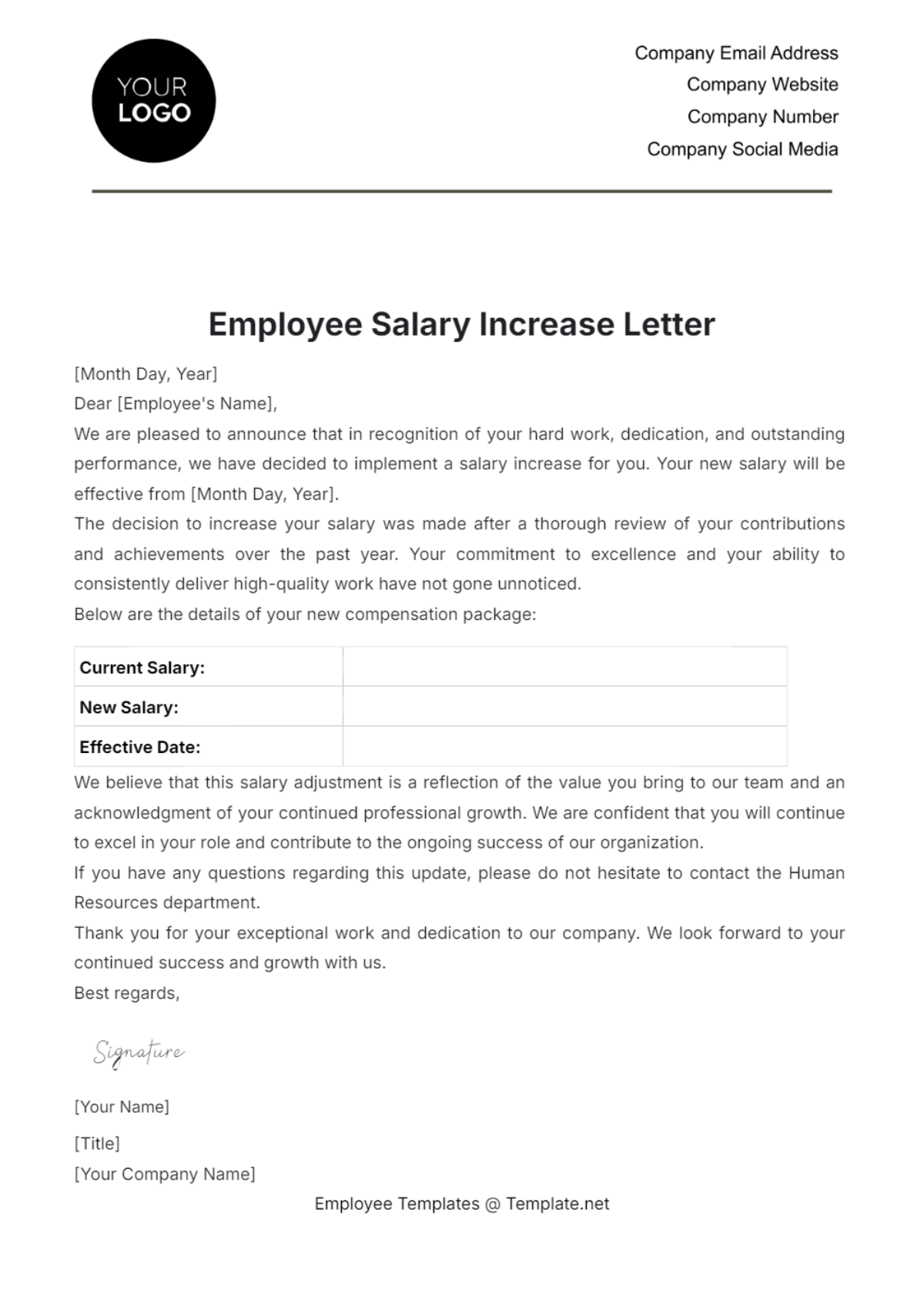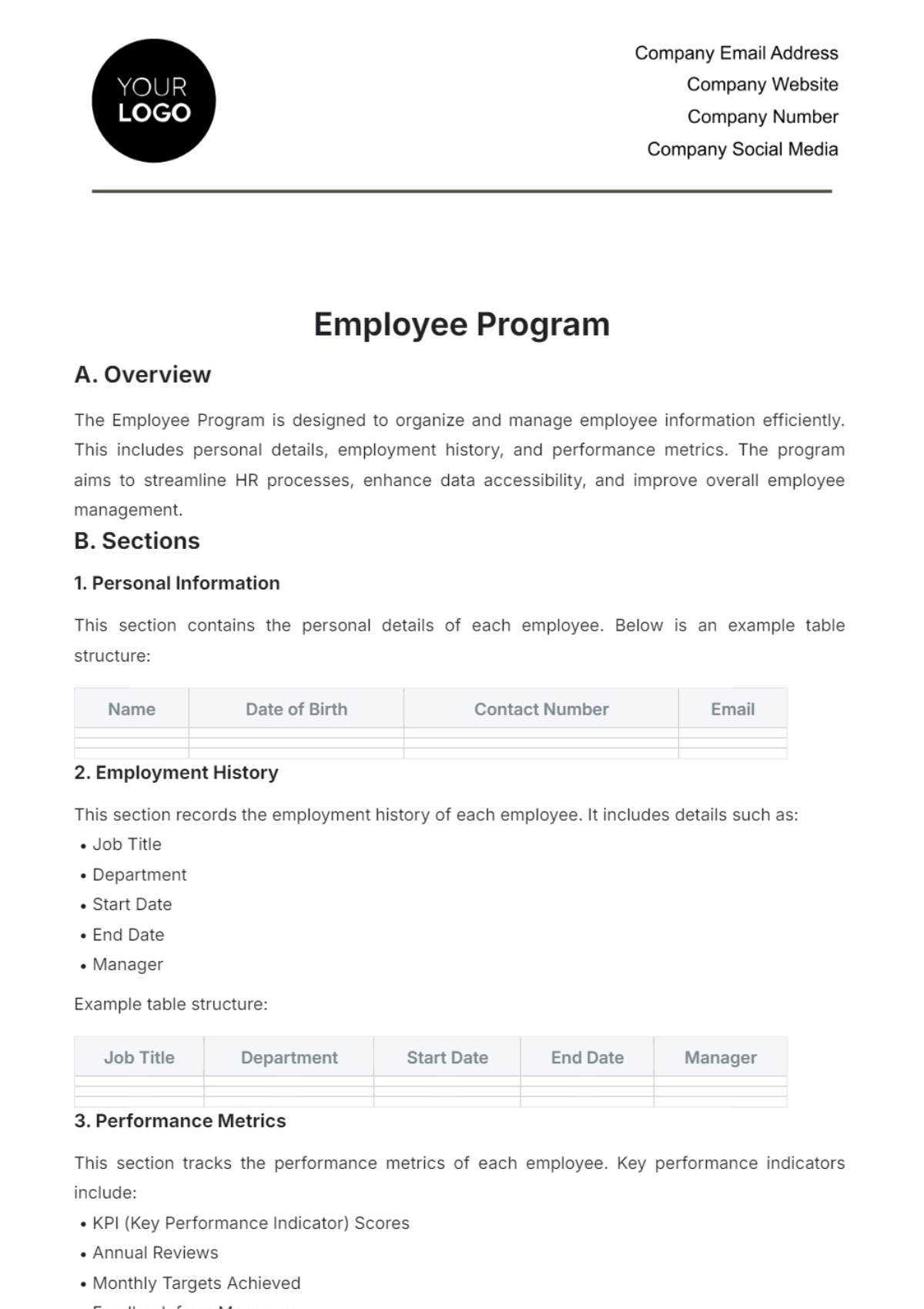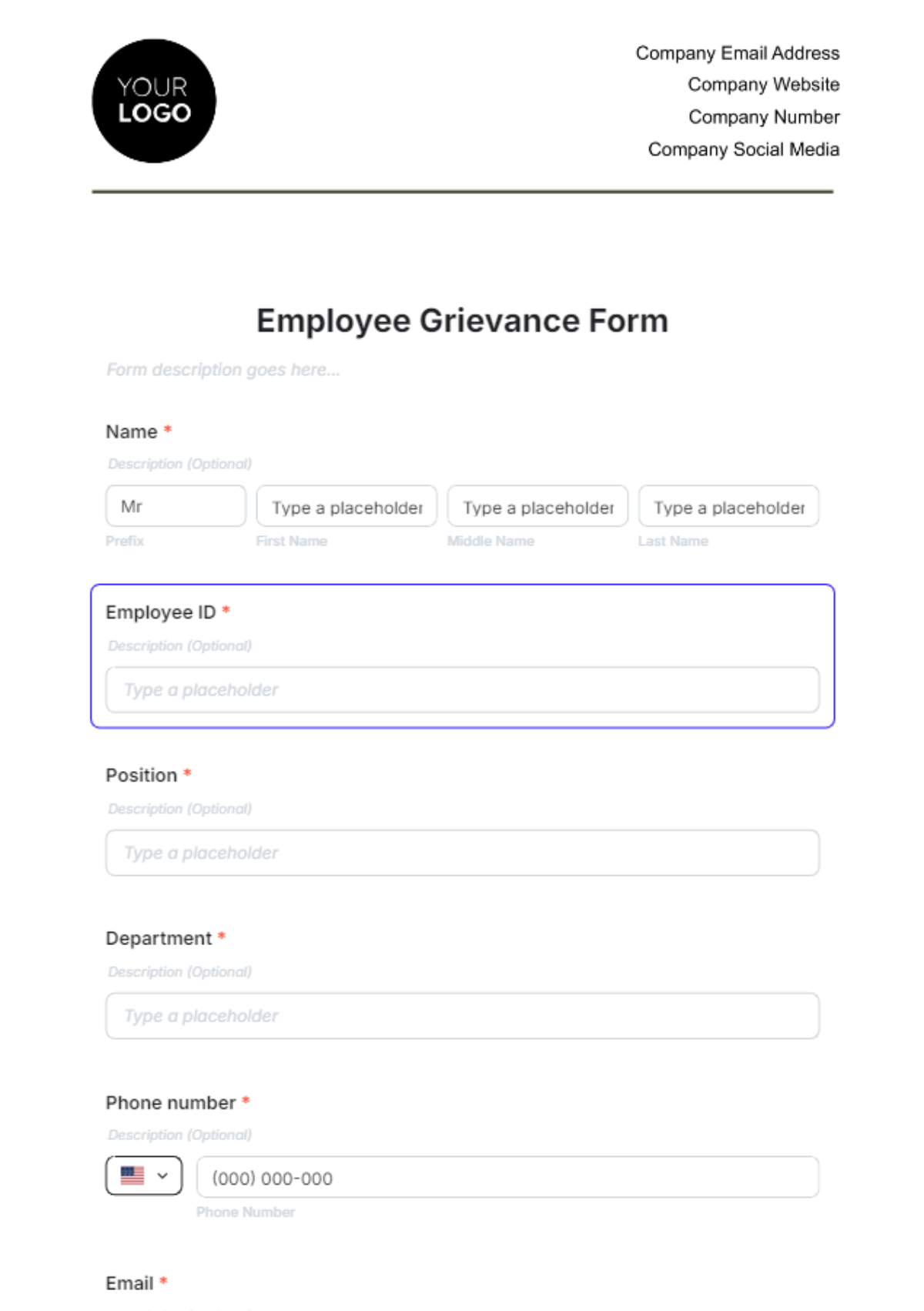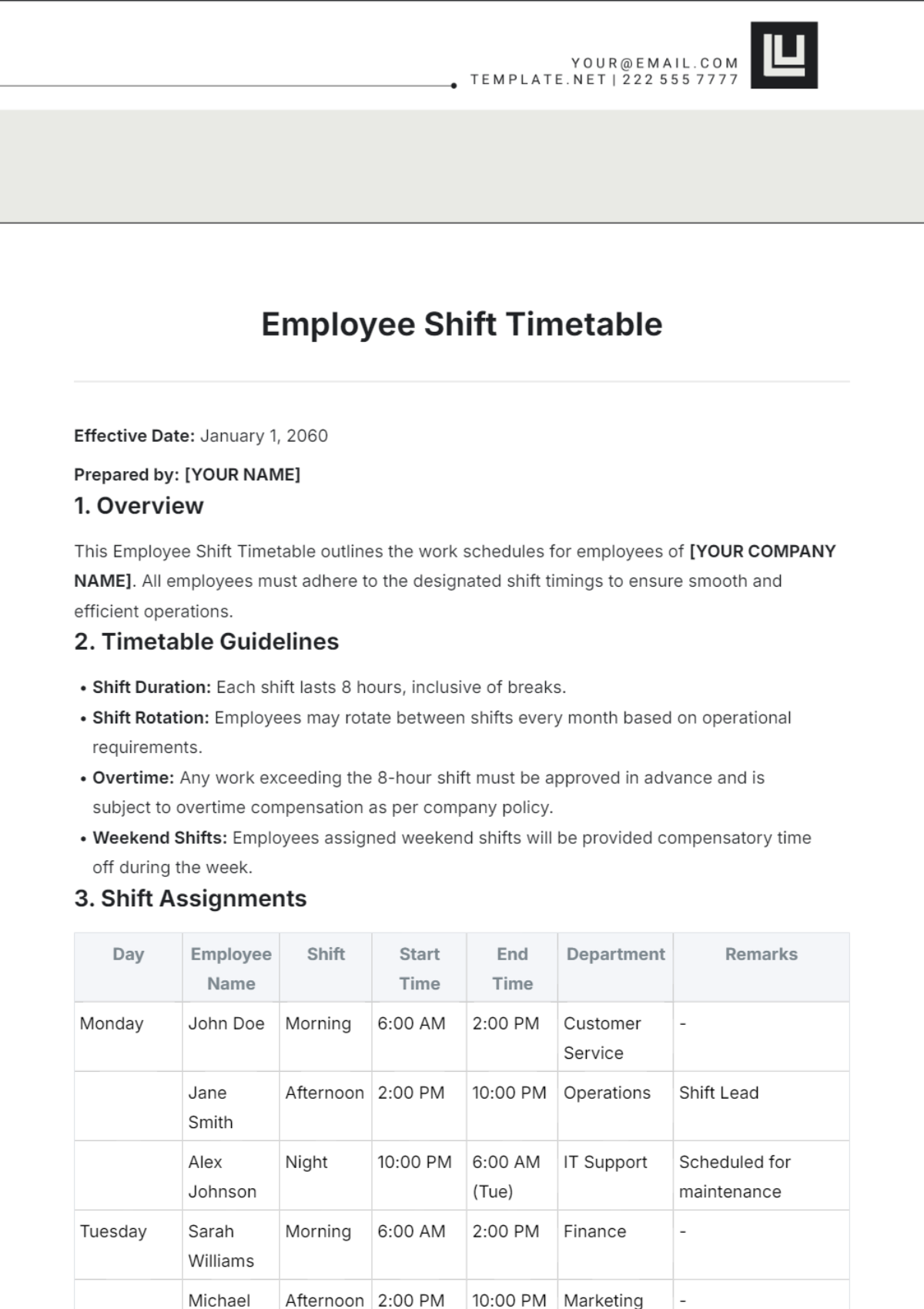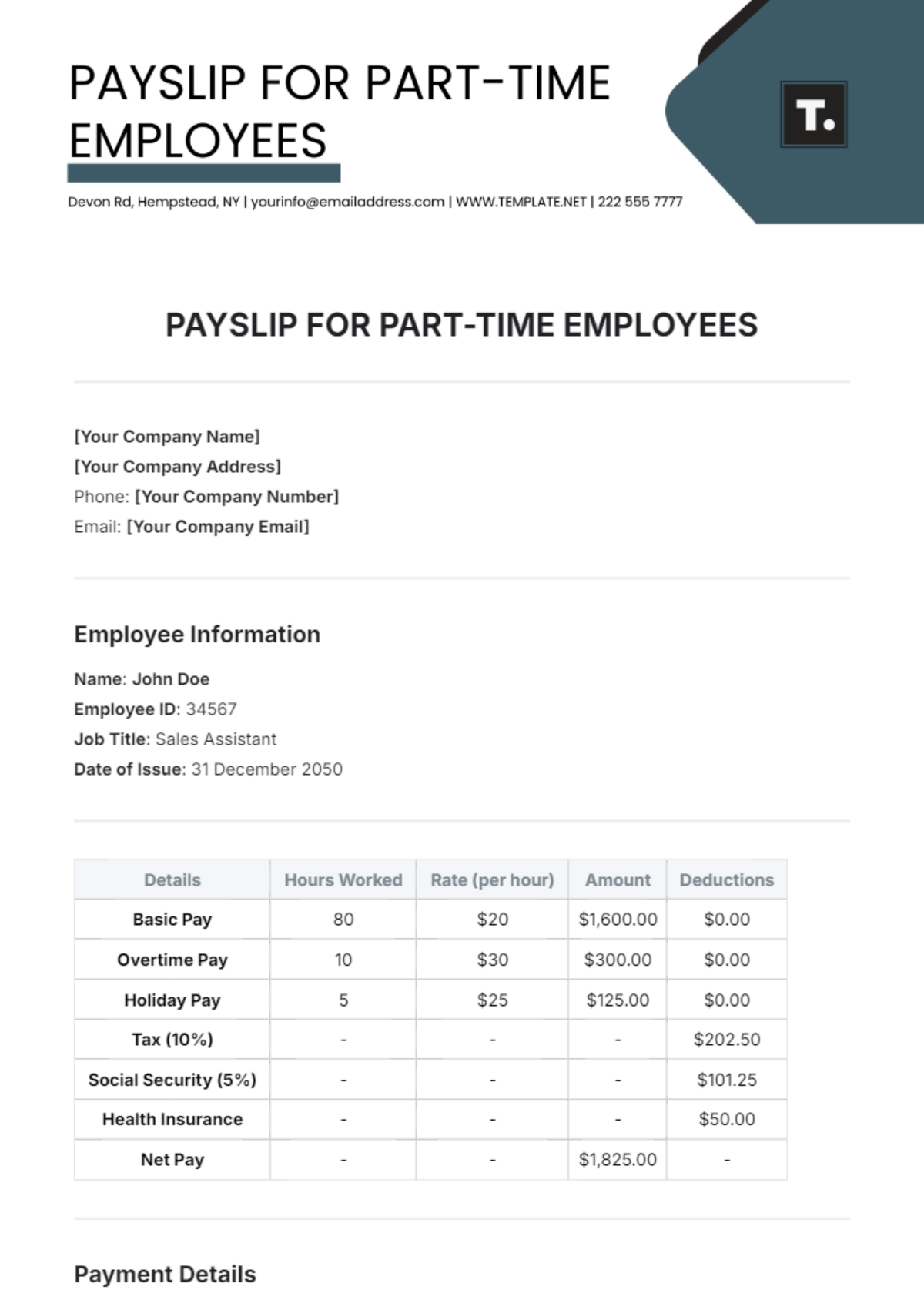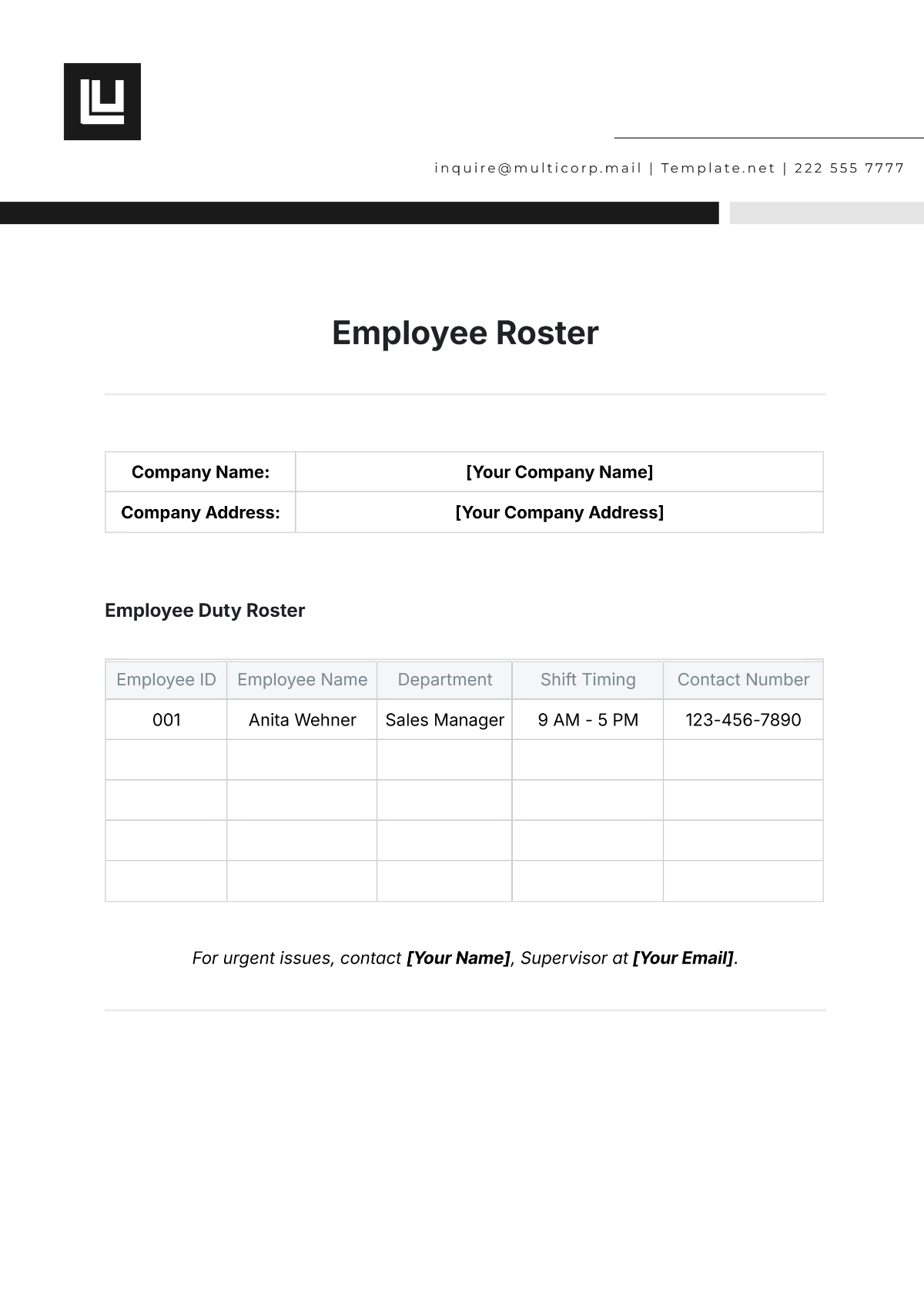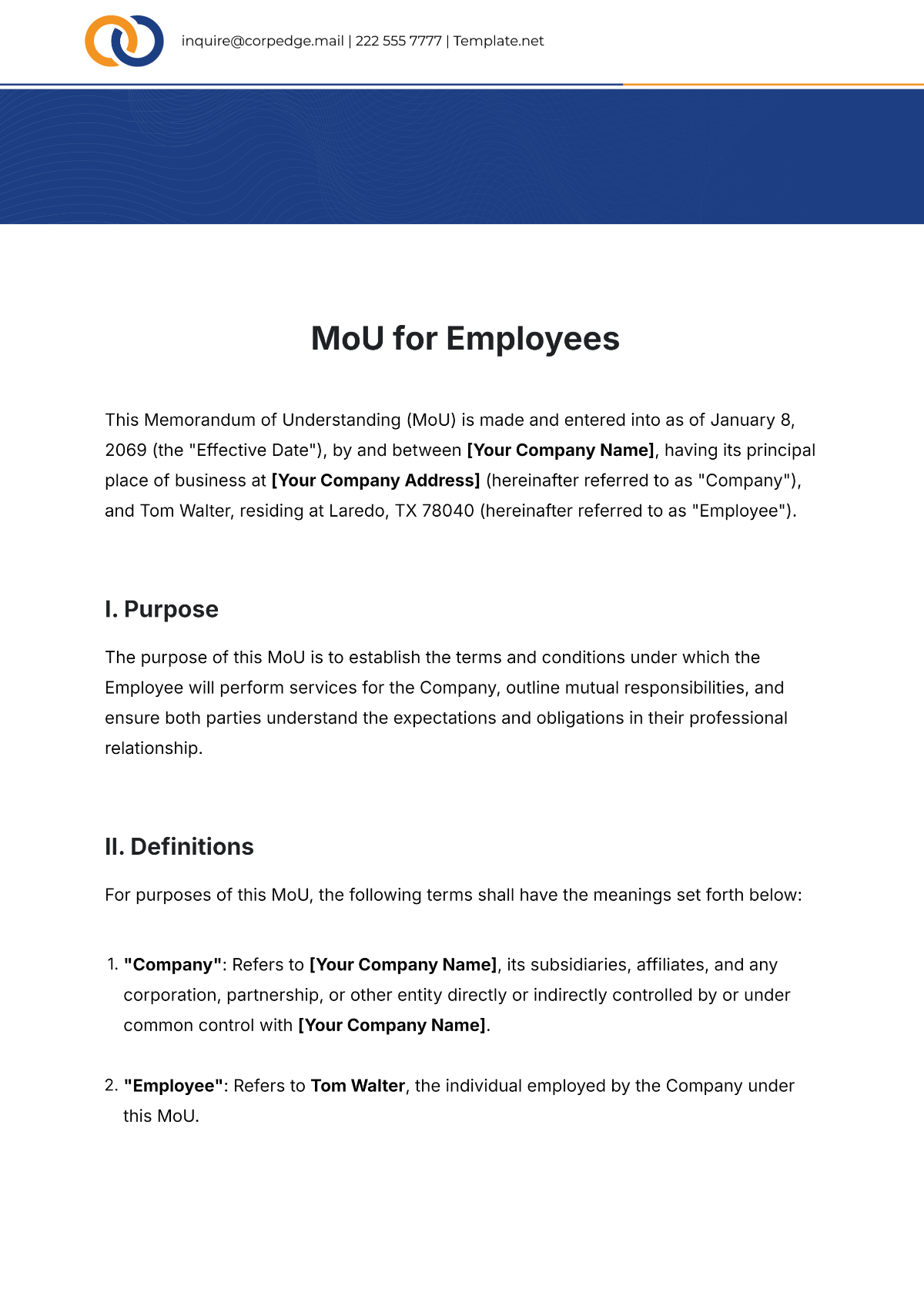Free Employee Task Report Template
Employee Task Report
Prepared By | Company | Date Prepared |
|---|---|---|
[YOUR NAME] | [YOUR COMPANY NAME] | [DATE] |
I. Introduction
The Employee Task Report provides a detailed overview of the tasks assigned to an employee, their status, completion rate, and any challenges faced during a specific period. This report aims to track, monitor, and analyze the progress of tasks to ensure timely completion, identify bottlenecks, and improve workflow efficiency. By maintaining organized task records, managers can effectively allocate resources, prioritize work, and enhance productivity.
Purpose
Track and monitor the progress of assigned tasks.
Identify completed, ongoing, and pending tasks.
Highlight any challenges or obstacles faced during task execution.
Provide insights to optimize task management and improve workflow efficiency.
Scope
This report will focus on analyzing various aspects of the employee's task management, including task completion rate, time taken for task completion, task priorities, and challenges encountered. It will cover task tracking, status updates, challenges, and recommendations for improvement.
II. Employee Information
In this section, details about each team member involved in tasks are recorded. Employee information is crucial for associating task accountability and for future reference within [YOUR COMPANY NAME].
Information recorded includes:
Full name
Position
Contact information
Department
III. Task Allocation
Task allocation for team members in [YOUR DEPARTMENT] is detailed in this section. This outlines who is responsible for specific tasks and the expected deadlines. It serves as a commitment from team members to their assigned responsibilities.
The following table categorizes tasks, their corresponding assignees, and their due dates:
Task ID | Description | Assigned To | Deadline |
|---|---|---|---|
T001 | Completion of client report | [YOUR NAME] | 2050-03-15 |
T002 | Update project plan | [YOUR NAME] | 2050-03-20 |
III. Progress Tracking
Tracking the progress of tasks is critical for meeting deadlines and for resource planning in [YOUR DEPARTMENT]. This analytical insight into task progress assists in proactive decision-making and in maintaining project timelines.
The progress for each task is updated weekly or bi-weekly by the responsible team member. The updates include completed phases, pending actions, and any discrepancies or delays encountered. A summary of these updates is as follows:
Task ID: T001 - 75% completed, awaiting client feedback.
Task ID: T002 - 50% completed, resource reallocation required.
V. Performance Metrics
Performance metrics offer quantitative measures to evaluate the efficiency and effectiveness of task completion within [YOUR DEPARTMENT]. These metrics help in assessing individual and team performance, aiding in identifying areas of strength and areas needing improvement.
Key performance indicators (KPIs) can include:
Task completion rate: Percentage of tasks completed within the set deadline.
Time to task completion: Average time taken to complete assigned tasks.
Error rate: Frequency of errors or discrepancies encountered during task execution.
The analysis of these metrics provides actionable insights to enhance productivity and streamline operations within [YOUR DEPARTMENT].
VI. Resource Utilization
Resource utilization is a critical aspect of effective task management. This section provides an overview of how resources, such as manpower, tools, and materials, are allocated and utilized for various tasks within [YOUR DEPARTMENT].
Key points to consider include:
Allocation efficiency: How effectively resources are being utilized against the planned allocation.
Overallocation: Instances where resources are stretched beyond capacity, leading to potential burnout or delays.
Underutilization: Resources that are not fully utilized, indicating potential areas for optimization.
A detailed analysis helps in optimizing resource allocation, ensuring balanced workloads, and maximizing productivity.
VII. Risk Assessment
Identifying and managing risks is essential for mitigating potential obstacles that may impact task completion and project success. This section outlines potential risks associated with ongoing and upcoming tasks within [YOUR DEPARTMENT].
Key risk factors to consider:
Deadline delays: Factors that may cause delays in meeting task deadlines.
Resource constraints: Limitations in resources that could hinder task execution.
External dependencies: Reliance on external factors or stakeholders that may affect task progress.
By proactively identifying and addressing risks, [YOUR DEPARTMENT] can implement contingency plans and strategies to minimize disruptions and ensure timely completion of tasks.
VIII. Recommendations and Action Plan
Based on the insights and analysis provided in the preceding sections, this section offers actionable recommendations and a strategic action plan for improving task management and enhancing team performance within [YOUR DEPARTMENT].
Recommendations may include:
Implementing task management software for better tracking and collaboration.
Conducting training sessions to enhance team skills and knowledge.
Reviewing and revising task prioritization methods to focus on high-impact activities.
IX. Conclusion
This section summarizes the overall progress and outlines the future actions to be taken for ongoing and upcoming tasks within [YOUR DEPARTMENT]. It provides a closing overview, highlighting any critical issues that require immediate attention from management.
